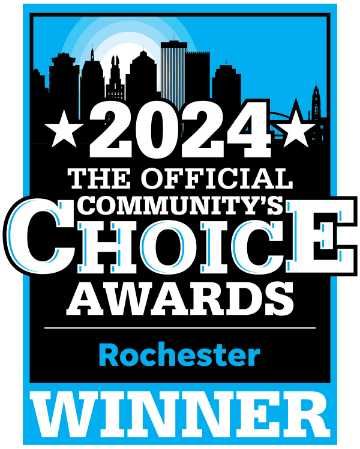Over the last few years, a significant shift has been occurring when it comes to the age of people seeking facelift consultations. The average facelift patient was typically someone in their mid-to-late 50s or 60s. Today, we’re increasingly seeing patients in their mid-40s choosing facial rejuvenation, and the reasons behind this trend reveal important insights about how we think about aging in the modern world, as well as speak to the advanced options available for facial rejuvenation.
The Strategic Advantage of Early Intervention

One of the most significant drivers of this change is a fundamental shift in how we approach aging. Today’s 40-somethings grew up with a more proactive wellness approach or matured as the preventative movement became more prevalent. They’re not waiting for pronounced signs of aging but are instead intervening earlier to maintain their appearance rather than dramatically reversing it later.
When you address facial aging in your 40s, you’re typically dealing with earlier, more subtle changes like initial laxity, early volume loss, and beginning jowl formation. This often means utilizing techniques that offer less dramatic one-time results, and instead, the illusion of aging more slowly. The tissue quality is superior, healing is more efficient, and the outcome can be maintained for decades with appropriate care.
Dr. Quatela notes that in his decades of practice, he’s observed that patients who intervene earlier often experience more graceful aging over time. It’s the difference between architectural maintenance and structural renovation. Plus, younger patients can enjoy their refreshed appearance for more years, providing a compelling long-term value perspective.
Technology and Technique Evolution
Modern facelift techniques have also evolved over the last decade or so. With the development of deep plane techniques, precise SMAS manipulation (tightening or repositioning the layer of muscle and connective tissue beneath the skin), and refined fat grafting approaches, today’s procedures address more foundational aspects of the face and neck and produce more natural-looking results than the tight, pulled look that some people associate with facelift surgery.
These advanced techniques, such as the preservation-style lift combined with a deep plane approach, allow for better rejuvenation treatment options for younger patients who are seeking a subtle refinement and targeted correction that will age well with them.
Life in the Digital Age

The world today is more visual than it’s ever been. Video calls, social media, and constant digital interaction mean we’re seeing our own faces more than any previous generation. For professionals in their 40s, who may be at peak career moments, looking refreshed and energetic can be important for a competitive edge. When your appearance doesn’t reflect your energy, capability, or how you perceive yourself, it can affect confidence. Most patients aren’t seeking to look dramatically different; they’re seeking better alignment between how they feel and how they appear.
An increasing openness and social media have also normalized aesthetic procedures and made it easier to see natural-looking results. When younger patients see relatable people sharing their experiences, it demystifies the process and shifts facial plastic surgery from something taboo to something more openly discussed.
Life Transitions and Personal Investment
Many patients in this age group are navigating significant life changes, whether it’s re-entering the dating world, celebrating career milestones, or simply reaching a point where they’re ready to invest in themselves. The 40s can represent a special age range where people are seeing aging changes that bother them and are at a stage where they can enjoy the results for decades.
The Importance of Individual Assessment
While the trend toward younger facelift patients is real, it’s crucial to approach this decision thoughtfully. Not every person in their 40s needs a facelift. Some may be better served by non-surgical treatments or deep neck contouring.
At the Quatela Center, our consultations focus on honest assessments of what will actually benefit you. Our surgeons are known for setting realistic expectations and recommending the approach that will best achieve your goals. Sometimes that’s a facelift. Sometimes it’s a combination of procedures. And sometimes, it’s not surgery at all.
Questions to consider:
- Are the changes you’re seeing bothering you consistently, or only in certain lighting?
- Have you maximized non-surgical options and still feel dissatisfied?
- Are your concerns about facial aging impacting your confidence or quality of life?
- Do you have realistic expectations about what facial rejuvenation can accomplish?
The Quatela Approach
Our philosophy has always been about creating natural-looking results that enhance rather than change who you are. This approach is particularly important for younger patients who want to look refreshed and rested, but not “done.”
At the Quatela Center, our facial plastic surgeons, Dr. Quatela, Dr. Lee, and Dr. Montague, are double board-certified specialists who focus exclusively on facial procedures. The technique required for a 45-year-old patient can differ from that needed for a 65-year-old. Natural-looking results for younger patients demand subtlety to maintain their features while addressing specific concerns. This requires both technical expertise and artistic judgment that comes from focused specialization. With their comprehensive approach to facial rejuvenation, Drs. Quatela, Lee, and Montague are uniquely positioned to guide patients through these decisions with both expertise and artistry.
What This Means for You
If you’re in your 40s and noticing facial changes that bother you, you’re not alone, and you’re not “too young” to explore your options. The declining age of facelift patients reflects broader cultural shifts toward preventative care and away from the stigma around aesthetic procedures.
The most important step is having an honest conversation with a surgeon who can evaluate your specific needs and goals. You may discover you’re an ideal candidate for a procedure that will give you decades of satisfaction, or you may learn that a different approach better serves your current stage of aging.
Either way, the consultation itself is an investment in understanding your options and making informed decisions about your aesthetic journey.
Are you interested in learning more about whether facial rejuvenation might be right for you? Schedule a consultation with one of our facial plastic surgeons to explore your options. At your appointment, they will discuss your concerns, goals, and lifestyle and offer their honest expertise and personalized guidance to create a treatment plan that works best for you.




Leave a Reply